How to Capture Unique Perspectives
More Photo Tips | Video Gallery | Photo Gallery | Enewsletter sign-up
In the realm of photography, capturing unique perspectives can transform ordinary scenes into extraordinary images. It's about seeing the world differently and conveying that vision through your lens.
• Embrace Unconventional Angles: Experiment with different angles, such as looking up, down, or sideways, to reveal hidden details and create depth.
• Utilize Leading Lines and Framing: Use natural or man-made elements to guide the viewer's eye through the image and add depth to your composition.
• Explore the Impact of Lighting: Experiment with various lighting conditions to alter the mood and perception of your photographs.
• Choose the Right Lens for the Perspective: Different lenses offer unique perspectives; wide-angle lenses for expansive views, telephoto lenses for compressed spaces, and versatile lenses for multiple perspectives.
• Find Unique Vantage Points: Change your camera's height and angle to discover new perspectives, using high-angle, low-angle, and eye-level shots to add dynamism to your images.
This article will guide you through various photography tips and techniques to help you achieve this. From exploring unconventional angles to choosing the right lens, we'll delve into the art of perspective.
Whether you're an amateur or a seasoned professional, these insights will enhance your skills in photographing unique perspectives.
Embrace Unconventional Angles
One of the simplest ways to capture unique perspectives is by experimenting with unconventional angles. Instead of shooting straight on, try looking up, down, or even sideways.

Click image to view larger
This approach can reveal hidden details and create a sense of depth or scale. It's all about breaking away from the norm and challenging your creative boundaries. So, don't be afraid to tilt your camera and see what happens.
Utilize Leading Lines and Framing
Leading lines and framing are powerful composition tools that can guide the viewer's eye through the image. They can be natural, like a winding road, or man-made, like a window frame.
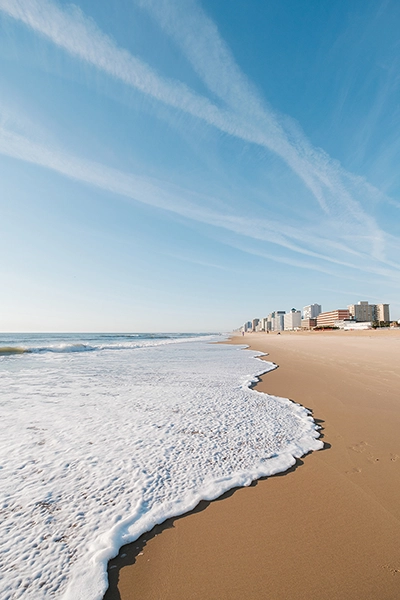
Click image to view larger
By strategically placing these elements in your shot, you can create a pathway that leads to your main subject. This technique not only adds depth to your image but also helps to capture a unique perspective that tells a compelling story.
Explore the Impact of Lighting
Lighting plays a crucial role in shaping perspective and mood in photographs. The direction, intensity, and color of light can dramatically alter the way a scene is perceived.
Experiment with different lighting conditions, such as sunset or bright midday sun. This will help you capture unique perspectives that convey different emotions and tell a more intricate narrative. Using different types of lighting can make your photos look better and more interesting to people who see them.
Choose the Right Lens for the Perspective
The lens you choose can greatly influence the perspective of your photos. Different lenses offer varying fields of view and can distort or compress space in unique ways.
Experimenting with different focal lengths can help you discover new perspectives. Wide-angle lenses, telephoto lenses, and tilt-shift lenses each offer unique possibilities.
• Tamron 17-28mm F/2.8 Di III RXD (Model A046) for Expansive Views
Wide-angle lenses are excellent for capturing expansive scenes. They can exaggerate perspective in photography and create a sense of depth and scale. The Tamron 17-28mm F2.8 lens is great for Sony full-frame mirrorless cameras. It's perfect for landscape, architecture, night photography, and interior photography, allowing you to capture wide scenes effectively.
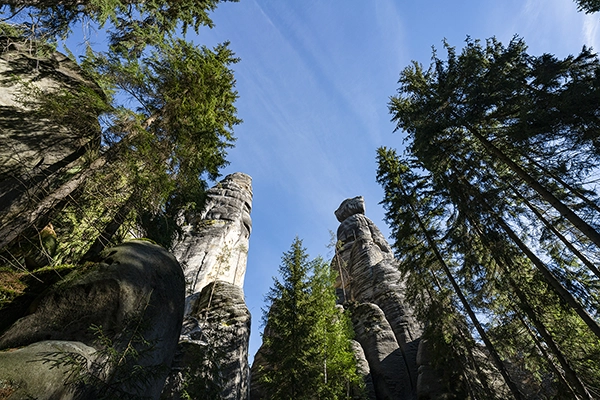
Click image to view larger
Crop-sensor camera users should consider purchasing the Tamron 11-20mm F2.8 lens. This lens is compatible with Sony E, Fujifilm X, and future Canon RF APS-C mirrorless cameras.
• Tamron 70-180mm F/2.8 Di III VC VXD G2 (Model A065) for Compressed Space
On the other hand, telephoto lenses can compress space and bring distant subjects closer. This can create a flattened perspective, where objects appear closer together than they actually are. The Tamron 70-180mm F2.8 VC G2 lens can emphasize certain elements in your photos. It can also bring distant subjects closer for a more personal touch.
• Tamron 28-200mm F/2.8-5.6 Di III RXD (Model A071) for Versatile Perspectives
The Tamron 28-200mm F2.8-5.6 lens is versatile and allows you to capture different perspectives without needing to switch lenses. This versatile lens is suitable for various types of photography, including landscapes, portraits, and close-up shots. It has the ability to zoom in and out, making it suitable for capturing a wide range of subjects.
You can zoom in and out to adjust your framing and composition quickly. This allows you to capture both wide scenes and small details using just one lens.
Finding Unique Vantage Points
Finding unique vantage points can dramatically change the perspective of your photos and experimenting with different camera heights and angles can significantly alter the narrative of crouching down, lying on the ground, climbing to higher vantage points, or even hanging your camera over an edge can reveal new perspectives and compositions.
High-angle and low-angle shots, for example, can offer fresh viewpoints and add dynamism to your images. Don’t be afraid to move around and try unconventional positions; sometimes, the most compelling images come from unexpected angles. These angles can make ordinary scenes appear extraordinary, adding a sense of drama, scale, or intimacy to your shots.
• High-Angle Shots: High-angle shots involve positioning the camera above the subject, looking down. This perspective can make subjects appear smaller and more vulnerable, which is useful for creating a sense of scale or emphasizing the environment around the subject. High-angle shots are particularly effective in landscape photography, where capturing the vastness of a scene from an elevated position can convey grandeur and depth. In urban photography, high-angle shots from rooftops or elevated walkways can provide a unique view of cityscapes, showcasing patterns and structures not visible from ground level.
• Low-Angle Shots: Conversely, low-angle shots are taken from below the subject, looking up. This perspective can make subjects appear larger and more imposing, adding a sense of power or significance. Low-angle shots are great for capturing towering buildings, tall trees, or even people, as they enhance the subject's presence in the frame. This angle can also add a dynamic and dramatic feel to action shots, making the viewer feel as if they are part of the scene.

Click image to view larger
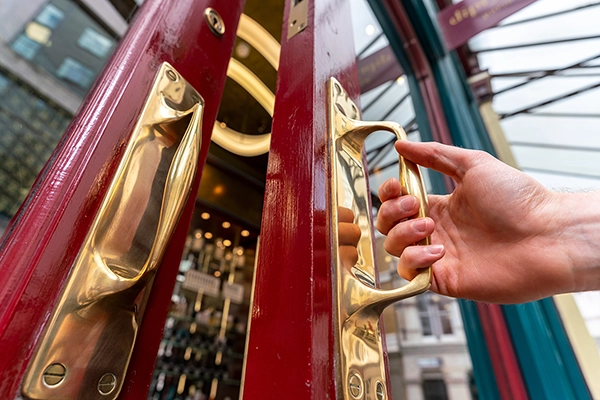
Click image to view larger
• Eye-Level Shots: Eye-level shots, where the camera is positioned at the subject's eye level, create a sense of intimacy and connection. This angle is often used in portrait photography to engage the viewer and convey the subject's emotions more directly. Eye-level shots can also be used creatively to capture the world from the perspective of animals or children, offering a fresh viewpoint and telling a story from their level.
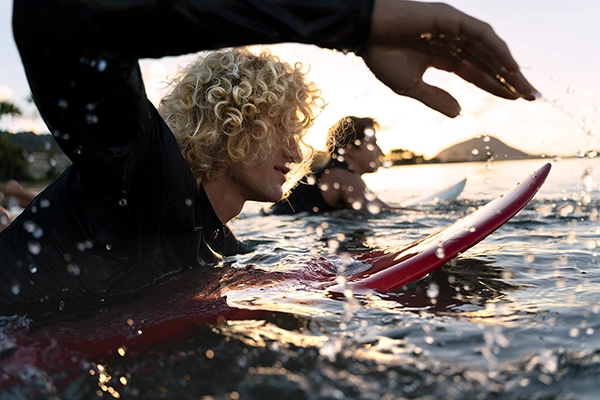
Click image to view larger
• Bird’s-Eye View: A bird’s-eye view is an extreme high-angle shot taken from directly above the subject. This perspective can create abstract and visually striking images by transforming familiar scenes into patterns and shapes. Drones have made it easier to capture bird’s-eye views, providing new opportunities for photographers to explore aerial perspectives in landscapes, architecture, and events.
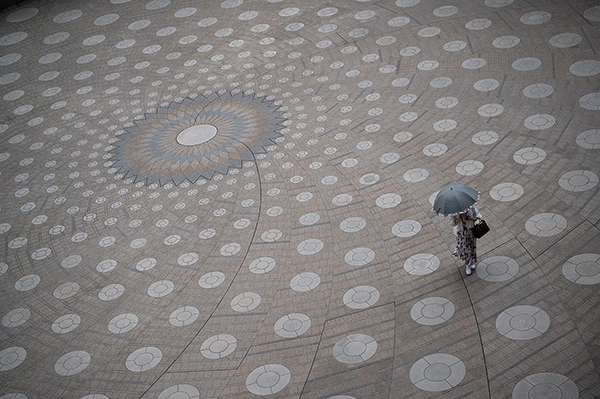
Click image to view larger
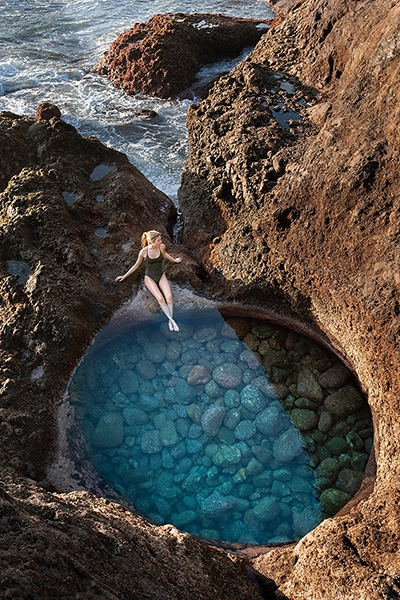
Click image to view larger
• Worm’s-Eye View: The worm’s-eye view is the opposite of the bird’s-eye view, taken from ground level looking up. This perspective can make everyday objects appear monumental and can reveal details that are often overlooked. It’s an excellent technique for emphasizing height and creating a dramatic sense of scale.

Click image to view larger
• Tilted Angles: Tilting the camera, also known as the Dutch angle or oblique angle, can add a sense of tension, unease, or dynamism to a photo. This technique is often used in street photography, fashion, and creative portraits to break away from traditional compositions and create more engaging and unique images.
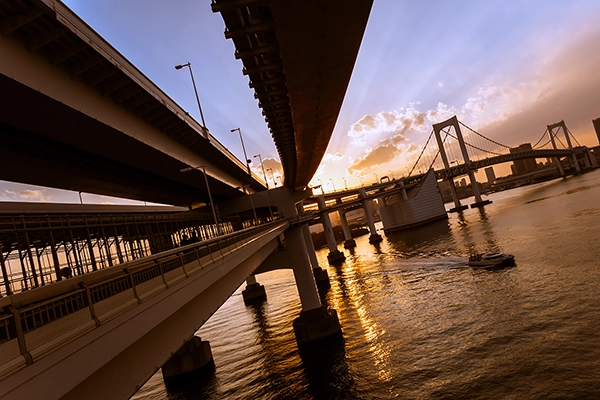
Click image to view larger
Practical Tips for Finding Unique Vantage Points
1. Scout Locations: Take time to explore and scout your shooting location. Look for interesting vantage points such as bridges, hills, rooftops, or even ground-level perspectives.
2. Use Tools: Utilize tools like tripods, monopods, or even selfie sticks to help achieve different heights and angles safely.
3. Drones and Ladders: Consider using drones for aerial shots or ladders for elevated perspectives.
4. Stay Safe: Always prioritize safety when seeking out unique vantage points. Be mindful of your surroundings and ensure you have a stable position before taking the shot.
By continually experimenting with different vantage points, you can discover new ways to tell stories through your photographs and capture the world from a fresh and unique perspective.
The Role of Post-Processing
Post-processing is not just about correcting flaws or enhancing colors. It can also change perspectives for artistic effect. You can make your images look different by cropping, rotating, or distorting them. This can give you a new and interesting view that you didn't see in the original photo. Experiment with these tools to see how they can transform your photos.
Practice and Experimentation
In conclusion, capturing unique perspectives is a blend of technical skill and creative vision. It requires practice, experimentation, and a willingness to see the world differently. Practicing these photography techniques is a first step toward a new imaging perspective and a great photo.

Click image to view larger
More Photo Tips | Watch Videos | Learn More About Tamron Lenses | Photo Gallery